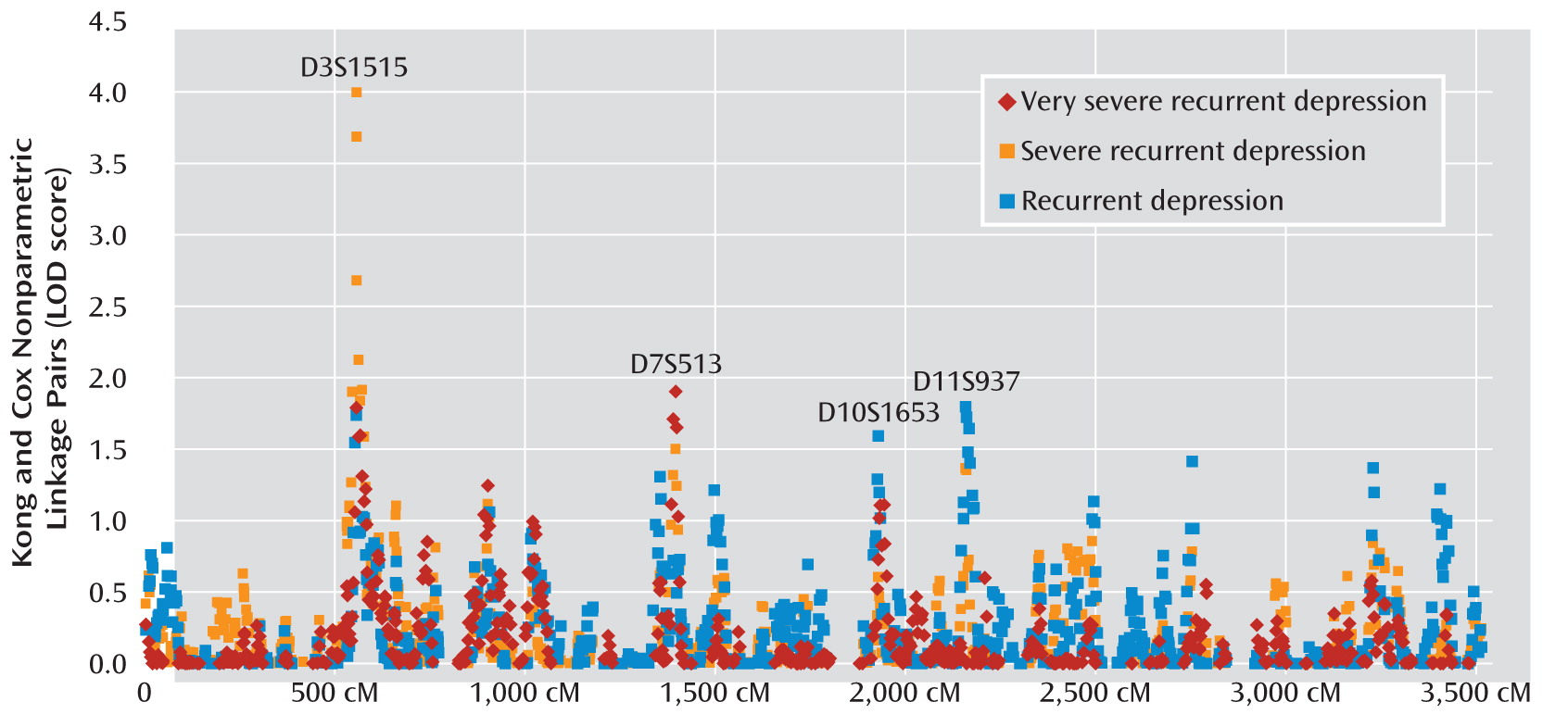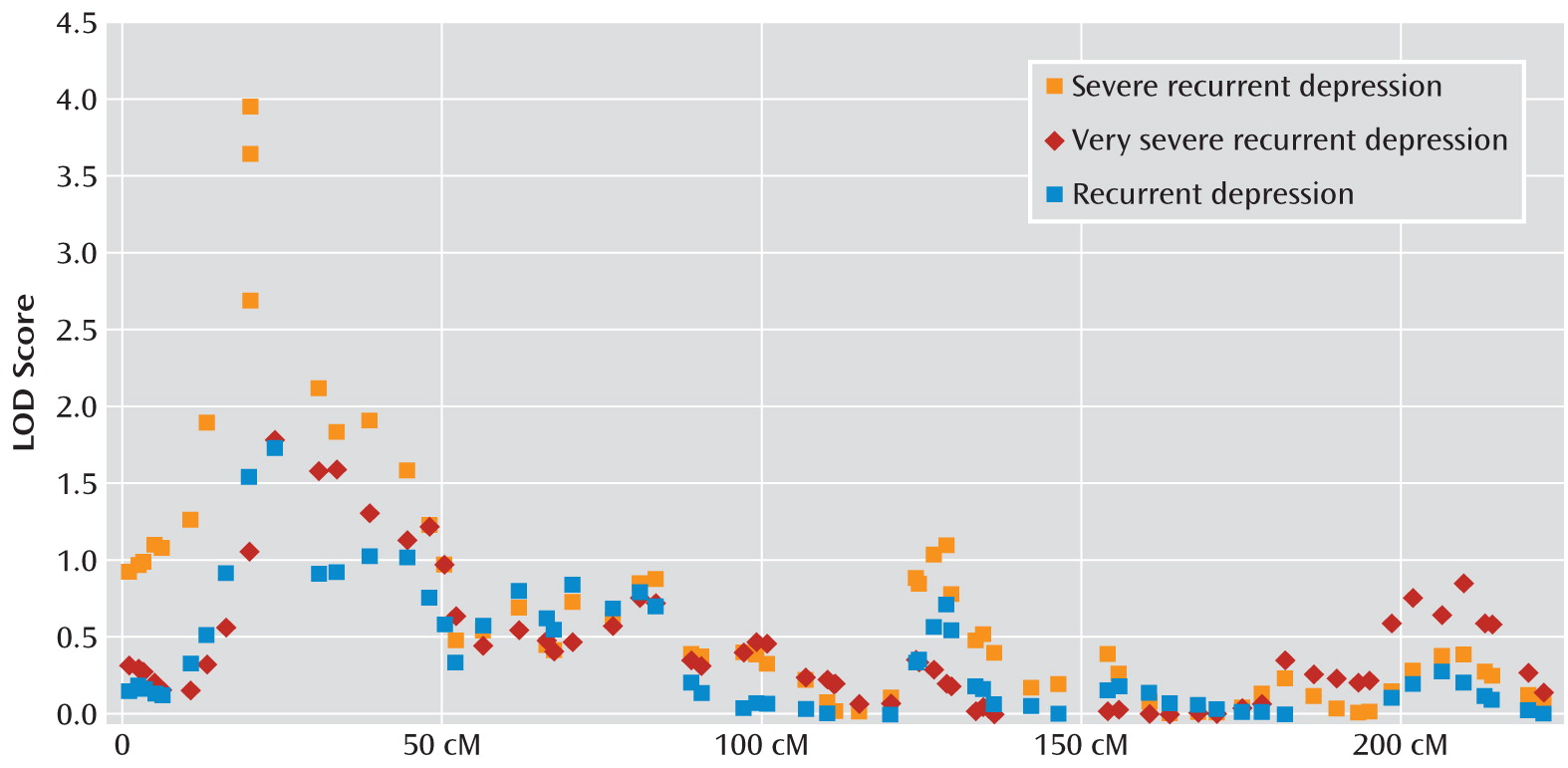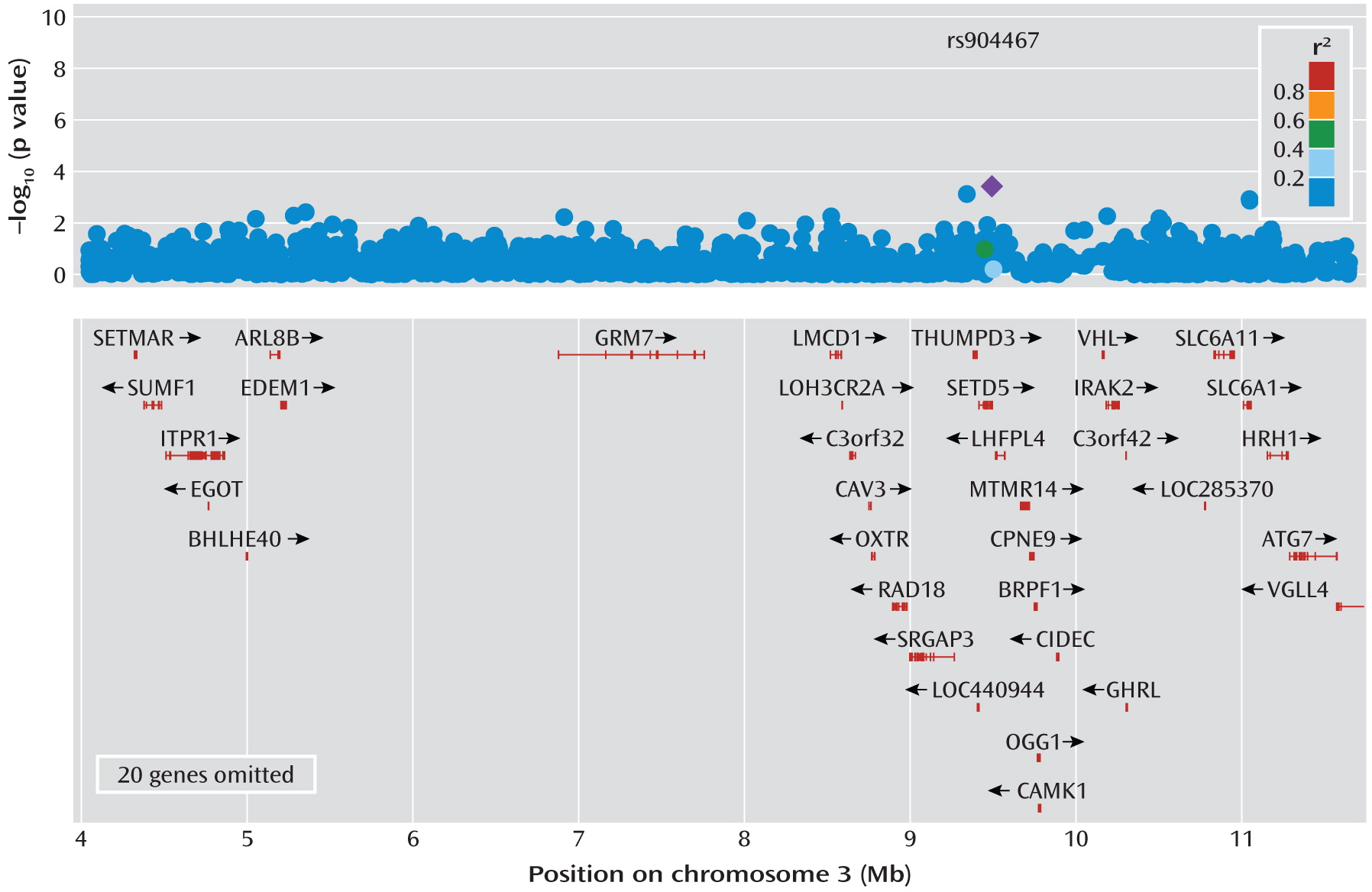A Genome-Wide Significant Linkage for Severe Depression on Chromosome 3: The Depression Network Study
Abstract
Objective:
Method:
Results:
Conclusions:
Method
Sibling-Pair Sample for Linkage Analysis
Clinical Assessment
Sibling-Pair Blood Samples for Linkage Analysis
Sibling-Pair Linkage Analysis
Linkage Analysis Descriptive
| Phenotype | ||||||
|---|---|---|---|---|---|---|
| Clinical Site | Number of Probands Ascertained | Age of Onset (Years) | Male (%) | Recurrent Depression | Severe Recurrent Depression | Very Severe Recurrent Depression |
| St. Louis | 732 | 19.1 | 24.9 | 575 | 262 | 95 |
| London | 233 | 21.1 | 24.5 | 222 | 170 | 84 |
| Dublin | 274 | 22.3 | 32.8 | 262 | 195 | 113 |
| Cardiff, United Kingdom | 248 | 24.9 | 25.8 | 232 | 162 | 96 |
| Birmingham, United Kingdom | 303 | 24.0 | 31.4 | 295 | 232 | 143 |
| Bonn, Germany | 276 | 29.8 | 25.4 | 260 | 249 | 238 |
| Lausanne, Switzerland | 208 | 24.6 | 27.9 | 194 | 126 | 46 |
| Aarhus, Denmark | 138 | 25.9 | 34.8 | 124 | 51 | 12 |
| Total | 2,412 | 2,164 | 1,447 | 827 | ||
| Phenotype | Total | Male (%) | Average Age of Onset (Years) |
|---|---|---|---|
| Recurrent depression | 2,164 | 26.12 | 22.6 |
| Severe recurrent depression | 1,447 | 26.14 | 23.1 |
| Very severe recurrent depression | 827 | 26.98 | 24.2 |
Samples for Case-Control Analysis
Genotyping for Case Patients and Comparison Subjects
Genotyping Workflow
Quality Control
Statistical Analysis
Results
Genome-Wide Linkage for Depression Phenotypes

Chromosome 3

Chromosome 7
Other Regions
Association Analyses

Discussion
Footnotes
Supplementary Material
- View/Download
- 338.47 KB
References
Information & Authors
Information
Published In
History
Authors
Funding Information
Metrics & Citations
Metrics
Citations
Export Citations
If you have the appropriate software installed, you can download article citation data to the citation manager of your choice. Simply select your manager software from the list below and click Download.
For more information or tips please see 'Downloading to a citation manager' in the Help menu.
View Options
View options
PDF/EPUB
View PDF/EPUBLogin options
Already a subscriber? Access your subscription through your login credentials or your institution for full access to this article.
Personal login Institutional Login Open Athens loginNot a subscriber?
PsychiatryOnline subscription options offer access to the DSM-5-TR® library, books, journals, CME, and patient resources. This all-in-one virtual library provides psychiatrists and mental health professionals with key resources for diagnosis, treatment, research, and professional development.
Need more help? PsychiatryOnline Customer Service may be reached by emailing [email protected] or by calling 800-368-5777 (in the U.S.) or 703-907-7322 (outside the U.S.).

